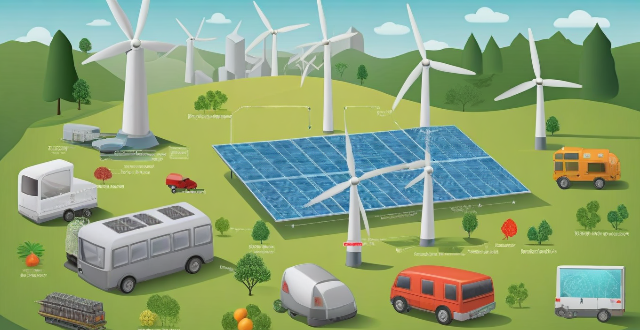In this article, we explore how green technology can help in reducing carbon emissions. We discuss renewable energy sources such as solar, wind, hydro, geothermal, and biomass energy, which produce little to no greenhouse gas emissions during operation. We also emphasize the importance of improving energy efficiency and conservation, utilizing carbon capture and storage technologies, and promoting electric vehicles. By implementing these green technologies, we can significantly reduce our carbon footprint and create a more sustainable future for generations to come.

How Can Green Technology Reduce Carbon Emissions?
Green technology, also known as clean technology or renewable energy technology, refers to the use of environmentally friendly practices and products that aim to reduce the negative impact on the environment. One of the primary goals of green technology is to reduce carbon emissions, which are a significant contributor to climate change. In this article, we will explore how green technology can help in reducing carbon emissions.
Renewable Energy Sources
Renewable energy sources such as solar, wind, hydro, geothermal, and biomass are considered green technologies because they produce little to no greenhouse gas emissions during operation. By transitioning from fossil fuels to renewable energy sources, we can significantly reduce carbon emissions.
Solar Energy
Solar energy is generated by converting sunlight into electricity using photovoltaic cells or solar panels. It is a clean and sustainable source of energy that does not produce any harmful emissions during its operation.
Wind Energy
Wind energy is produced by harnessing the power of wind through wind turbines. Like solar energy, wind energy is a clean and renewable source of energy that does not produce any harmful emissions during its operation.
Hydroelectric Energy
Hydroelectric energy is generated by harnessing the power of flowing water through hydroelectric power plants. While it is a renewable source of energy, it may have some environmental impacts such as changes in water temperature and flow patterns. However, it still produces much fewer emissions than fossil fuels.
Geothermal Energy
Geothermal energy is generated by harnessing the heat from the earth's crust through geothermal power plants. It is a clean and sustainable source of energy that does not produce any harmful emissions during its operation.
Biomass Energy
Biomass energy is generated by burning organic matter such as wood chips, straw, or other plant materials. While it does produce carbon dioxide emissions, these emissions are considered "neutral" because the plants used for biomass energy absorb an equal amount of carbon dioxide from the atmosphere during their growth.
Energy Efficiency and Conservation
Improving energy efficiency and conserving energy are essential components of green technology. By reducing energy consumption, we can reduce the demand for fossil fuels and subsequently reduce carbon emissions. Some ways to improve energy efficiency and conservation include:
- Using energy-efficient appliances and lighting systems
- Insulating homes and buildings to reduce heating and cooling needs
- Encouraging public transportation, carpooling, biking, and walking instead of driving alone
- Utilizing smart grids and demand response programs to manage energy usage more efficiently
Carbon Capture and Storage (CCS)
Carbon capture and storage (CCS) is a technology that captures carbon dioxide emissions from power plants and industrial processes before they are released into the atmosphere. The captured carbon dioxide is then stored underground or utilized in other applications. CCS has the potential to significantly reduce carbon emissions from fossil fuel-based power generation and industrial processes.
Electric Vehicles (EVs)
Electric vehicles (EVs) are powered by electricity instead of gasoline or diesel fuel. Since EVs produce zero tailpipe emissions, they can help reduce carbon emissions associated with transportation. Additionally, if the electricity used to charge EVs comes from renewable sources, the overall carbon footprint of transportation can be further reduced.
Conclusion
Green technology plays a crucial role in reducing carbon emissions and mitigating the effects of climate change. By transitioning to renewable energy sources, improving energy efficiency and conservation, implementing carbon capture and storage technologies, and promoting electric vehicles, we can significantly reduce our carbon footprint and create a more sustainable future for generations to come.